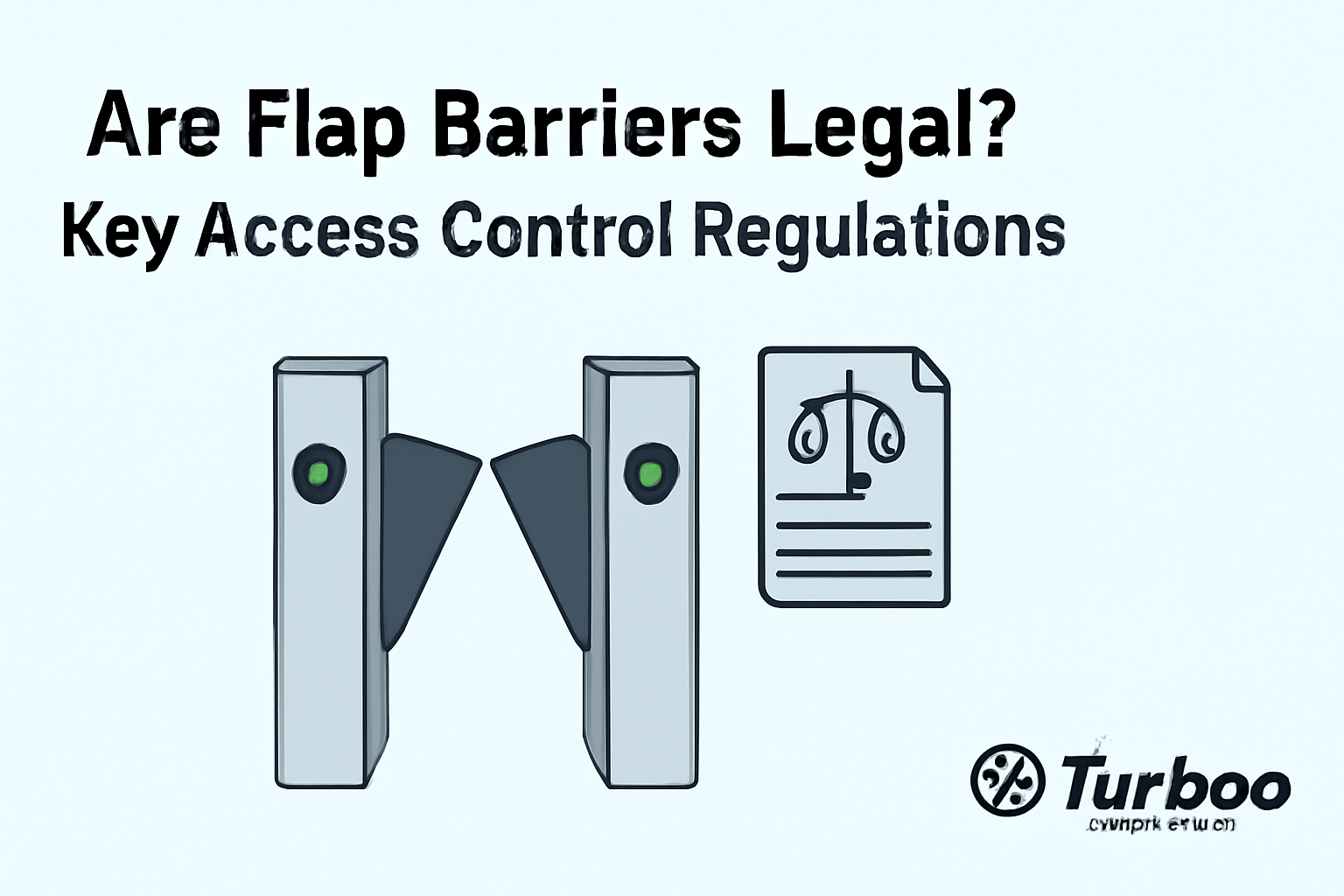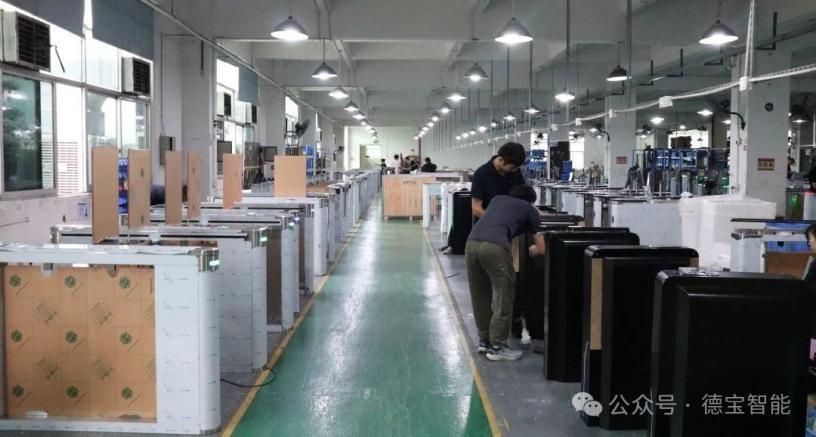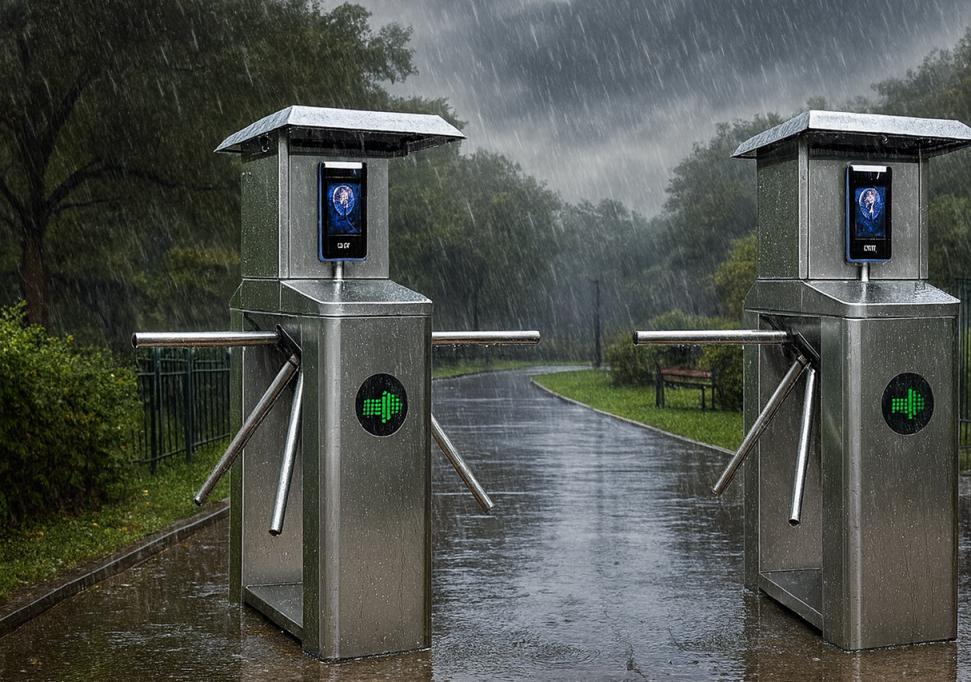Are Flap Barriers Legal? Key Access Control Regulations


Flap barrier regulations play a critical role in safeguarding both people and property during access control installations. Many facility managers underestimate legal requirements, only to face hefty fines or operational delays later. This article explores the essential legal requirements governing flap barriers and similar access control systems, offering clear guidance on achieving full compliance with certification standards, safety compliance mandates, and access control laws. By understanding these regulations, you will ensure safer installations, avoid costly penalties, and maintain uninterrupted operations under evolving legal frameworks.
Global Legal Frameworks for Flap Barriers
Across North America, Europe, and Asia-Pacific regions, different legal frameworks dictate how flap barriers may be installed and operated. In the United States, OSHA and building codes require that any access control device—including flap barriers—meets strict safety requirements and holds valid approvals. Canada follows similar provincial codes, often incorporating CSA and UL listings to prove compliance.
In Europe, CE marking under the Machinery Directive and relevant EN standards demonstrate conformity with essential health and safety requirements. Member states may then layer additional national regulations—such as fire marshals’ rules on emergency egress—on top of EU-wide mandates.
Across Asia-Pacific, countries adapt international benchmarks to local contexts. Australia and New Zealand enforce AS/NZS standards, while Japan and South Korea mandate certifications from their own testing bodies alongside global ISO norms. In each jurisdiction, facility managers must review both international standards and local laws to confirm that flap barrier installations satisfy all legal requirements before commissioning.
Smooth transitions between these regional frameworks often rely on harmonization efforts by industry bodies, but staying abreast of local variations remains the responsibility of every compliance officer.
Importance of Certification Standards
Certification standards serve as the cornerstone of any reliable access control system. When flap barrier regulations demand proof of safety and performance, certifications validate that a product has undergone rigorous testing. Without recognized certification standards in place, facility managers lack objective evidence that their equipment meets all legal requirements.
Internationally, certifications such as ISO 9001 for quality management and ISO 14001 for environmental compliance can enhance credibility. In addition, regional marks like the CE badge in Europe or UL listings in North America demonstrate adherence to local mandates. A CE-marked flap barrier confirms conformity with the Machinery Directive, while a UL-listed model ensures compliance with North American electrical safety codes. These recognitions reduce uncertainty during inspections and streamline approvals.
Local certification bodies often impose supplementary tests tailored to specific environments. For instance, some jurisdictions require additional impact-resistance or vandal-proof trials for barriers installed in high-traffic public areas. Other regions may mandate compliance with electromagnetic compatibility standards to prevent interference with medical or security equipment. Understanding the scope and depth of each certification process is essential for achieving full legal compliance.
Successfully navigating the certification process demands early engagement with testing laboratories and notifying authorities of project timelines. Documentation packages typically include technical drawings, material specifications, and test reports. Manufacturers must furnish detailed records showing that control systems function correctly under defined loads and fault conditions. Incomplete or inconsistent documentation can lead to delays in receiving certification, potentially holding up an entire installation.
Moreover, periodic recertification may be required to ensure ongoing compliance with updated regulations. As access control laws evolve, certification standards can shift in response to technological advances or incident lessons. Subscribing to standards bodies’ notifications and participating in industry working groups helps facility managers anticipate these changes. By securing all necessary approvals and staying current on revisions, organizations reinforce both safety compliance and confidence among stakeholders.
Fire Safety Laws and Access Control
Fire safety remains a non-negotiable priority within any facility’s broader safety compliance framework. When considering flap barrier installations, it is critical to integrate devices seamlessly with fire protection systems. Failure to do so can violate fire egress requirements and lead to costly penalties.
Across many jurisdictions, fire codes stipulate that access control devices must default to an open state upon alarm activation. This fail-safe mode guarantees unobstructed egress during emergencies. Fire doors and shutters follow similar protocols; flap barriers must align with these industry precedents. Integrating with a building’s fire alarm control panel ensures that activation signals override any lock or sensor functionality.
In addition, materials used in flap barriers must meet fire-resistance criteria. Certain codes require barrier components to withstand flames and high temperatures for a minimum duration. Manufacturers typically test assemblies against standards such as ASTM E119 or EN 1634 for fire resistance. Ensuring that all parts—from housing panels to sensor housings—are certified to these specifications prevents structural failure in a fire scenario.
Detailed coordination with fire safety engineers is also essential. They verify that placement of the barrier does not impede sprinkler coverage or smoke evacuation paths. They confirm that signage and illumination meet visibility requirements under reduced lighting conditions. In many regions, authorities conduct joint inspections with fire marshals to confirm both fire safety and access control laws are satisfied.
Readers seeking deeper technical guidance on fire-related protocols can consult comprehensive fire safety documentation provided by industry experts, as well as standards from the National Fire Protection Association for best practices and code references in North America via the NFPA’s official legal guide.
Role of Regulatory Bodies and Industry Standards
Regulatory bodies play a pivotal role in defining, updating, and enforcing access control laws. In the United States, OSHA sets overarching workplace safety mandates that cover the installation and operation of mechanical access devices. Their guidelines stipulate performance criteria and maintenance obligations, ensuring that flap barriers do not introduce new hazards.
Across Europe, the Security Industry Authority (SIA) and related consortia develop voluntary standards to harmonize legal frameworks across member states. Similarly, the Security Industry Association publishes guidelines on integrating access control devices into broader security architectures. These standards often influence local regulations, even where they remain technically optional.
Industry associations also facilitate communication between manufacturers, installers, and end-users. Regular committees review incident reports and technological trends, issuing recommendations that preemptively shape flap barrier regulations. For example, updates to sensor sensitivity thresholds in response to entrapment incidents directly inform new model requirements.
Government agencies and industry bodies frequently collaborate to balance innovation with safety compliance. They publish circulars, best-practice white papers, and model codes to guide facility managers toward legal compliance. Subscribing to these updates ensures timely awareness of regulatory changes, certification renewals, and emerging safety standards.
At the facility level, integrating these guidelines into internal compliance processes strengthens an organization’s regulatory posture. By mapping official standards against operational procedures and documentation workflows, compliance officers can close potential gaps before inspections occur. This proactive approach reduces the likelihood of non-conformance findings and supports a culture of continuous improvement.
Legal Requirements for Installation and Maintenance
Ensuring legal requirements are met begins well before a technician unpacks a flap barrier. Pre-installation compliance checks verify that site conditions, electrical supplies, and fire-alarm integrations all align with local access control laws. A detailed pre-installation audit typically examines floor loading capacities, clearances for emergency egress, and proximity to sprinkler heads or smoke dampers. It also confirms that barrier models carry the correct CE, UL, or ISO credentials and that those credentials remain current. Early engagement with authorities speeds permit approvals and prevents costly work stoppages during installation. For a comprehensive approach, facility teams should refer to established compliance guidelines to structure their checklists and documentation.
Once installed, ongoing inspection and maintenance rules come into force. Regulatory frameworks often mandate quarterly or semi-annual inspections by certified technicians. These inspections cover mechanical wear, sensor calibration, electrical integrity, and emergency-release functionality. Detailed maintenance logs must record each activity, noting part replacements, firmware updates, and test results under controlled fault conditions. In many jurisdictions, failure to maintain these records or to perform inspections on schedule can constitute a breach of access control laws, potentially leading to fines or insurance claim denials. By embedding these maintenance requirements into standard operating procedures, organizations demonstrate due diligence and uphold both safety compliance and legal requirements over the barrier’s full operational life.
Risks of Non-Compliance
Ignoring flap barrier regulations exposes facilities to significant legal and operational risks. From a legal perspective, authorities can impose fines that scale with the severity of the violation. Minor paperwork lapses might incur modest penalties, but serious breaches—such as obstructing fire egress or operating a barrier without valid certification—can trigger multi-thousand-dollar fines, forced removal of equipment, or complete shutdown orders. Regulatory bodies like OSHA in the U.S. and the Security Industry Authority in the U.K. maintain enforcement programs that include surprise inspections and whistleblower-driven audits.
Operationally, non-compliance creates safety hazards. A sensor malfunction left unchecked could trap a user, leading to injury and potential litigation. A barrier that fails to open on fire alarm signals can block evacuation routes, compounding liability in an emergency. Insurance underwriters actively review compliance records; any gap in maintenance or lapsed certification may void coverage. Moreover, high-profile compliance failures attract negative publicity, undermining stakeholder trust and damaging corporate reputation.
Facility managers and compliance officers must therefore view flap barrier regulations not as optional red tape, but as essential guardrails that protect both people and organizational integrity.
Best Practices for Staying Updated with Flap Barrier Regulations
Regulations evolve continuously in response to new technologies, incident reports, and legislative changes. To stay ahead, compliance teams should subscribe to updates from key standards bodies—such as the Security Industry Association’s official regulations portal—and local regulatory agencies. Attending industry conferences and participating in professional forums fosters early awareness of upcoming amendments to access control laws and fire safety codes.
Continuous training is equally vital. Regular workshops for installation crews, maintenance technicians, and security staff reinforce current legal requirements and cultivate a culture of safety compliance. Incorporating mock audits and tabletop drills ensures that everyone understands procedural changes before they become mandatory. Additionally, leveraging automated compliance-management software can streamline revision tracking, send renewal reminders, and generate audit-ready reports, reducing human error and administrative overhead.
Successful Compliance Implementations
A multinational airport recently overhauled its access control infrastructure, replacing outdated turnstiles with CE-marked flap barriers. By conducting pre-installation compliance audits and coordinating closely with local fire marshals, the project team achieved full certification within eight weeks. Regular maintenance schedules and digital logs enabled the airport to breeze through external inspections, ultimately enhancing passenger throughput without sacrificing safety.
Lessons from Non-Compliance Incidents
In contrast, a large corporate campus experienced a temporary shutdown after failing to obtain valid UL certification for newly installed barriers. During a routine fire inspection, authorities discovered that the barriers did not default to open on alarm, violating fire egress laws. The ensuing remediation—including hardware replacement, additional training, and penalty payments—cost the company over $250,000 and led to a six-month operational delay. This incident underscores the high stakes of overlooking even seemingly minor regulatory details.
Future Trends in Flap Barrier Regulations
Emerging technologies will continue to reshape access control laws. Biometric integration, mobile credentials, and cloud-based monitoring introduce new data-privacy and cybersecurity requirements. Regulators are already incorporating these aspects into updated standards, ensuring that flap barrier regulations address not only physical safety but also digital integrity.
Sustainability concerns are also influencing legal frameworks. Expect future mandates on energy consumption, material recyclability, and end-of-life disposal for access control equipment. Early adopters who track these trends and engage with standards committees will gain a competitive edge by shaping regulations rather than merely reacting to them.
Conclusion
Understanding and adhering to flap barrier regulations is essential for any facility that prioritizes safety, legal compliance, and uninterrupted operations. From global legal frameworks and rigorous certification standards to diligent installation checks and proactive maintenance, every stage demands attention. Regulatory bodies, industry associations, and evolving technological advances all play a role in shaping these requirements. By embracing best practices, learning from real-world case studies, and staying abreast of future trends, organizations can navigate access control laws with confidence and competence.
Key Legal Regulations for Flap Barriers
- Review global frameworks (OSHA, CE, ISO) and local building codes.
- Secure and maintain valid certifications for all barrier components.
- Integrate flap barriers with fire alarm systems and adhere to fire safety mandates.
- Complete pre-installation compliance audits covering site conditions and egress pathways.
- Establish ongoing inspection and maintenance schedules with documented logs.
- Monitor and adapt to updates via standards bodies like the SIA’s regulations.
- Conduct regular training and mock audits to enforce safety compliance.
- Analyze incident lessons to refine procedures and prevent non-compliance.
- Plan for future requirements in cybersecurity, data privacy, and sustainability.












